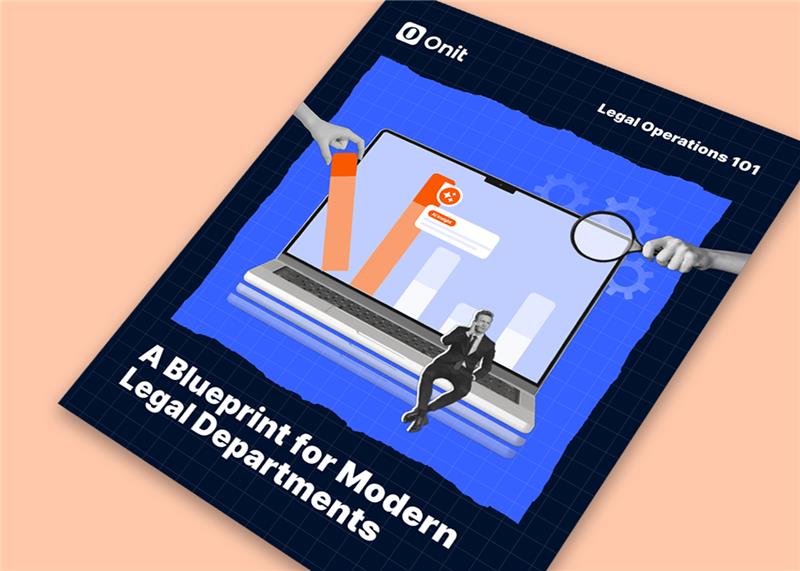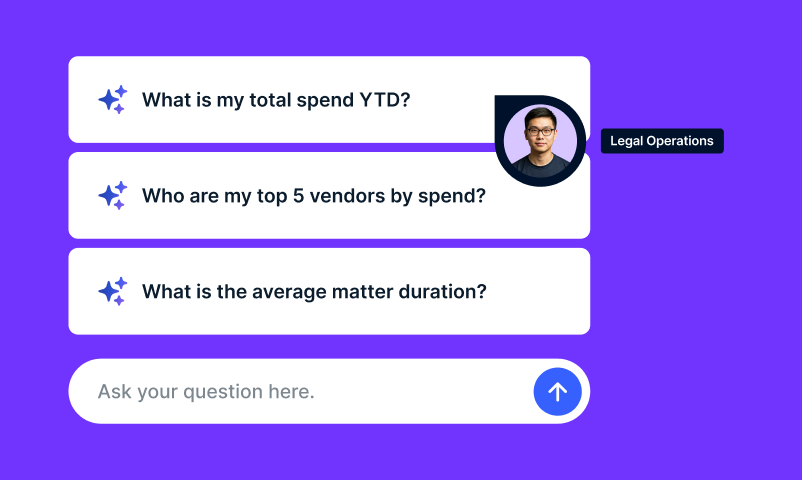
Enterprise legal management (ELM) is the framework corporate legal departments use to bring structure, visibility, and strategy to their operations. It connects key functions like legal spend management, matter tracking, vendor oversight, and workflow automation in one cohesive platform.
For today’s in-house teams, ELM is more than an organizational tool. It is the foundation of a data-driven legal department that can manage complexity, respond faster to business needs, and demonstrate tangible value across the company.
Why ELM matters for modern legal ops teams
Corporate legal teams are balancing more matters, tighter budgets, and growing demands from leadership. Without the right system in place, work gets lost in inboxes, reporting becomes manual, and spend control slips through the cracks.
Enterprise legal management brings order to that chaos. By centralizing activity and automating routine work, ELM helps teams:
- Gain visibility into legal spend, matters, and outside counsel performance
- Improve accuracy and compliance with defined workflows
- Replace manual data entry with automation
- Collaborate easily with finance, procurement, and business units
- Measure and report on the value legal delivers to the organization
In short, ELM allows legal operations to scale efficiently and stay aligned with business priorities.

What enterprise legal management includes
Enterprise legal management software combines several core capabilities into a single environment. While each solution may vary, the most common components include:
- Matter management: Track all legal work in one system, from internal projects to litigation and contracts
- Legal spend management: Review invoices efficiently, enforce billing guidelines, and forecast budget with accuracy
- Vendor management: Evaluate outside counsel based on performance and cost-effectiveness
- Legal service request intake: Streamline how the business submits requests and route them automatically to the right team
- Compliance and risk management: Maintain oversight of regulations, obligations, and potential exposure
- Analytics and dashboards: Translate data into actionable insights that improve decisions
These features work best when connected through a unified platform that supports integration across the company’s legal tech stack.

How enterprise legal management software works
Enterprise legal management software acts as a central hub for all legal operations. It gathers data from multiple systems, automates repetitive workflows, and gives legal professionals real-time access to information they need.
A well-designed ELM platform typically:
- Centralizes matters, spend, and vendor data in one system of record
- Automates approval processes and invoice review
- Integrates with enterprise tools like ERP, CLM, and document management systems
- Uses analytics to highlight spend patterns, cycle times, and workload distribution
- Supports secure collaboration across departments and outside counsel
With these elements in place, legal teams can focus more time on strategic work and less on administrative tasks.
What makes modern ELM software different
Not all enterprise legal management solutions are created equal. Legacy tools often require heavy configuration, lack AI capabilities, or force teams to adapt to rigid workflows.
Modern ELM software changes that. It is designed to be:
- AI-native: Built with intelligence that accelerates tasks like invoice validation, matter triage, and reporting
- User-friendly: Intuitive interfaces help teams adopt new technology quickly
- Configurable: Tailored to match each organization’s structure and processes
- Connected: Seamlessly integrates with core business and legal systems
- Insight-driven: Turns operational data into metrics that demonstrate value
The result is a legal department that operates efficiently, stays aligned with business goals, and makes data-backed decisions.

How Onit redefines enterprise legal management
Onit’s enterprise legal management software helps legal teams operate on their own terms. Designed by legal professionals, it brings together everything needed to manage matters, spend, and vendors in a single, AI-native platform.
With Onit, legal departments can:
- Gain full transparency into spend and outside counsel activity
- Automate manual review processes and approval workflows
- Monitor vendor performance through detailed analytics
- Connect seamlessly with finance, procurement, and compliance systems
- Report on outcomes with dashboards that track time, cost, and efficiency
By putting automation and insight at the center of every workflow, Onit enables legal teams to work smarter, not harder.
Ready to see what ELM can do for you?
Use Onit’s ROI Calculator to estimate the value enterprise legal management could deliver to your department.
Ready to see Onit’s ELM in action? Book a demo today with one of our experts.







